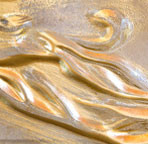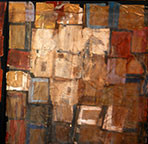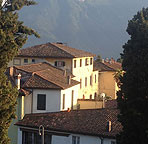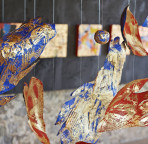
Fresco does not happen to be just a painting on a convenient and relatively permanent support. It is the energizing of a wall which is itself a determinant of the imagination.—John W. Dixon, Jr., “Painting as Theological Thought: Issues in Tuscan Theology” in Art, Creativity and the Sacred, Diane Apostolos-Cappadona, ed.
The work of Giotto di Bondone (1267 –1337), shows the awaking of not only new dimensions of artistic space but also of the shaping of human imagination. Professor John W. Dixon, describes Giotto’s innovations as a “theological revolution” in which we see: “the transformation of figures from being symbols of pathos, pointers to devotional response in the worshiper, into figures of moral density and muscular control, with gestures as revelations of inner feeling and moral relation. Yet this is not specific to fresco. The substance of fresco is the congestion of weight onto the surface of the wall.”
“A wall is an act of the imagination, not simply when it is enclosure, but when it encloses and gives shape to meaningful space A wall is the boundary of our private selves and can take the shape of our image of order. It is also the shaping edge of corporate space, giving body to the image of the common self held by the community whose vision, through the agency of the master builder, has shaped the space. When such a wall is fittingly frescoed, its meaning has been translated into human drama, and the emotional life which was contained by the walls is caught up onto the sustaining surface of the wall to be transfigured in the sacred story. The wall is two-dimensional. The great achievement of Giotto (himself a builder) was the energizing of this two-dimensional plane by affirming it and then extending it back into the represented space. The drama is enacted at the juncture of the real space and the represented space. It was the taking up of the third dimension into thought.”
“It is not just the third dimension that Giotto uses; it is the third dimension cut to the measure of man. The space is clear and intelligible, movement in it is free and orderly. The pictures are unprecedentedly large, thus relating the pictorial space closely to the actual space of the spectator. ( . . . ) Giotto’s paintings go back from a fixed surface and create a new world which the worshiper now contemplates from within his own space. Thus is the worshiper’s individuality clearly established while it is enhanced by his participation in the dynamics of the picture. With Giotto, there is never any separation of the worshiper and the world of the picture, since it is the life of the worshiper that is taken up onto the wall and there transformed. But when, as it were, the worshiper took a step or two back from the wall and became the spectator rather than the worshiper, then the attitude was secularized. The spectator became detached from the world with the result that science became possible, as did the form of theology that finds its work possible in detachment from that which is being accounted for by its uncommitted and involved technique.”
Comments welcome.





